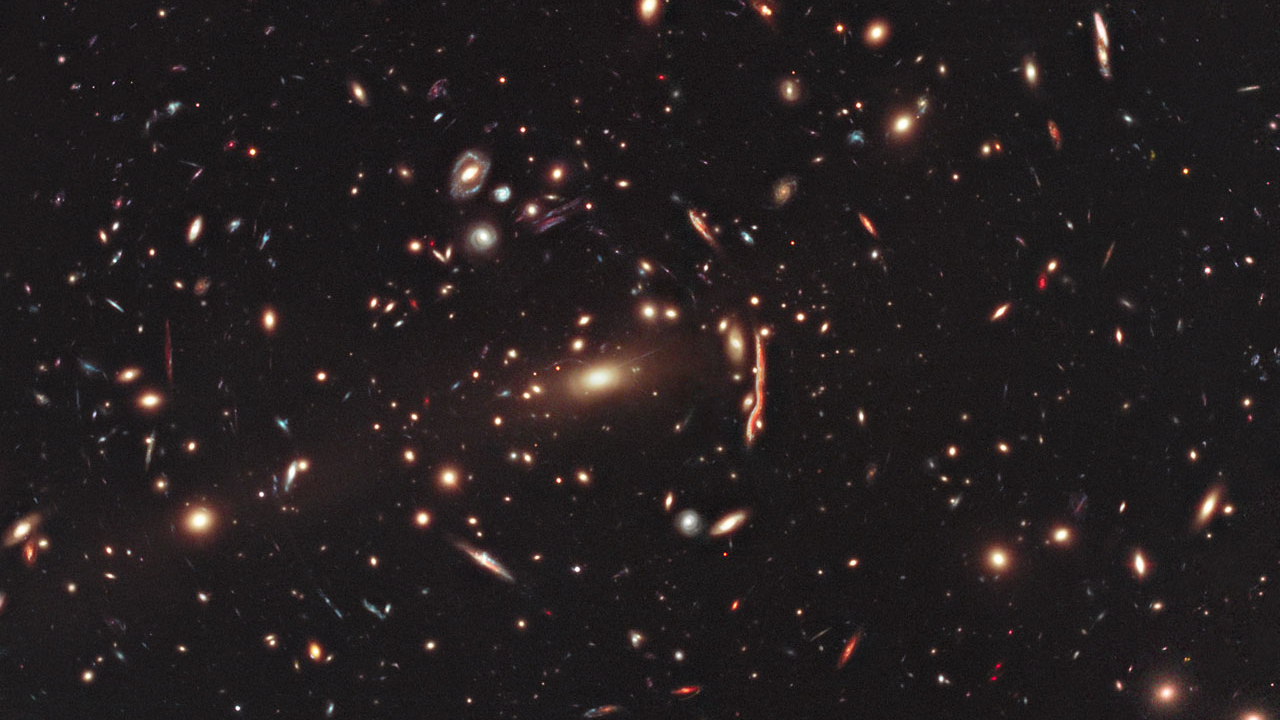
A new investigation of the structure of galaxy clusters has found it agrees with predictions made by the standard model of cosmology, the best explanation scientists have of the evolution of the universe over its 13.8 billion-year existence.
The research, conducted by a team led by physicists from the SLAC National Accelerator Laboratory at Stanford University, measured X-ray emissions from clusters of galaxies. This helped to reveal the structure of these clusters and the distribution of matter throughout them.
The data they collected conform to a model of universal evolution and structure called the lambda cold dark matter (ΛCDM) model, which suggests that the infant universe was an extremely hot, dense sea of photons and matter tightly coupled as plasma.
Related: No, the Big Bang theory is not 'broken.' Here's how we know.
As the infant universe underwent a period of rapid expansion called inflation, small perturbations spread through the plasma as a sound wave, producing under- and over-densities of both matter and radiation, but not affecting dark matter.
According to the ΛCDM model, the plasma expanded and cooled, and electrons and protons soon combined to form the first atoms, with free electrons no longer infinitely scattering photons. This allowed the universe to become transparent to light. Overdense regions collapsed to birth the first stars, and the universe eventually reached its current state, with clusters of galaxies as the largest bound objects linked by a vast cosmic web of dark matter.
Confirming this ΛCDM model by inferring the mass distributions of galactic clusters from X-ray emissions was no easy task because it's easier to use X-ray emissions as a measurement of mass distribution when the energy of the gas in clusters is balanced by the pull of gravity as it binds the entire system.
This balance is achieved when galaxy clusters have settled down into a "relaxed" state, so mass distribution studies typically focus on these galaxies. That means that when researchers compare real observations with the theoretical predictions of the ΛCDM model, they must take into account that there has been a bias toward selecting these "relaxed" galaxies.
While considering these factors, the team examined computer-simulated clusters produced by The Three Hundred Project, which models galaxy clusters and their environments, assessing what shape the X-ray emission for each cluster should take. To refine their data set, the researchers applied selection criteria that allowed them to identify relaxed clusters in real observations of the universe. Then, they could assess the relationship among the cluster mass, how centrally concentrated this mass was, and the redshift of the clusters.
Redshift is the stretching of the wavelength of light that occurs as a result of the expansion of the universe. The farther light has traveled, the more it is shifted toward the red end of the electromagnetic spectrum. That means the earlier and more distant the galaxy, the more extreme the redshift, thus making this a great measure of both distance and age.

Applying this concept to the simulated Three Hundred Project clusters in addition to 44 real galaxy clusters observed with NASA's Chandra X-ray Observatory, the team found that over the universe's 13.8 billion-year existence, clusters have become more centrally concentrated. At the same time, at any given epoch of the universe, less massive clusters are more centrally concentrated than more massive ones.
"The measured relationships agree extremely well between observation and theory, providing strong support for the ΛCDM paradigm," Elise Darragh-Ford, a doctoral student in physics at Stanford and co-author of the research, said in a statement.
The team now hopes to expand their investigation by collecting more observations from real galaxy clusters. When the Vera C. Rubin Observatory opens its eye on the universe, it will begin the Legacy Survey of Space and Time, which should spot far more galaxy clusters. Joining this quest will be the fourth-generation cosmic microwave background experiment, while the European Space Agency's Athena satellite mission will follow up with more X-ray measurements.
The team's future efforts will also depend on getting more data from simulated galactic clusters. SLAC cosmologists are currently attempting to expand the size of computer simulations of the cosmos while improving accuracy. They will also look at how these observations conform to other cosmological models.
The research is published in the journal Monthly Notices of the Royal Astronomical Society.
Follow us on Twitter @Spacedotcom or on Facebook.







